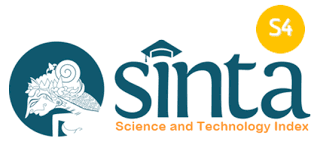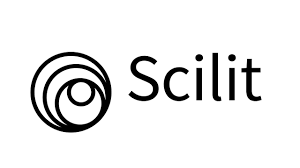READING THE LAYERS AND TRACES OF WAVES INTERVAL: DESIGN INFORMED BY THE DYNAMIC PATTERN OF NATURE
Abstract
Tulisan ini bertujuan untuk mengeksplorasi gagasan interval di alam sebagai dasar metode perancangan arsitektur. Tulisan ini berfokus pada pola interval alami yang diciptakan oleh pergerakan gelombang laut. Pembahasan interval gelombang dalam penelitian ini merupakan bagian dari penyelidikan mengenai wacana arsitektur yang saling berhubungan dengan dinamika alam. Pembahasan pola alam saat ini berfokus pada pola yang terdapat pada fisik makhluk hidup. Makalah ini menyelidiki enam studi kasus gelombang laut di alam dan menjelaskan mekanisme jejak dan penyerapan yang terjadi di berbagai lapisan aliran air sebagai respons terhadap arah angin, hambatan fisik di sekitarnya, dan permukaan topografi bawah air. Lapisan jejak dan penyerapan hadir sebagai mekanisme yang menginformasikan pemrograman arsitektur yang didorong oleh interaksi berbagai konteks pola alam yang dinamis. Penelitian tersebut memanfaatkan pola pergerakan gelombang sebagai cara untuk menghasilkan listrik, menyaring air dan merawat makhluk hidup di sekitar pantai, khususnya berbagai organisme tiram di laut dalam. Interkoneksi antara sistem-sistem ini menghasilkan berbagai kemungkinan komposisi ruang arsitektural yang bertujuan untuk memanfaatkan dinamika alam, sekaligus mendorong pertumbuhan makhluk hidup. Kajian ini menunjukkan bagaimana pola-pola alam tidak hanya ada dalam bentuk makhluk hidup yang statis, namun juga muncul secara dinamis melalui berbagai kekuatan yang ada dalam lingkungan.
Keywords
Full Text:
PDFReferences
Alexander, C. (2002). The nature of order: An essay on the art of building and the nature of the universe. Berkeley: Center for Environmental.
Allen, S. (2012). Field conditions. The Digital Turn in Architecture 1992 - 2012, 62–79.
Ball, P. (2012). Pattern formation in nature: Physical constraints and self-organising characteristics. Archit Design, 82, 22-27. doi:https://doi.org/10.1002/ad.1375
Delagaye, D. (2018). Permeable Interval Spaces. Sint-Lucas Ghent: KU Leuven.
Felton, A. J., & Smith, M. D. (2017). Integrating plant ecological responses to climate extremes from individual to ecosystem levels. Philosophical Transactions: Biological Sciences, 372(1723), 1-12. Diambil kembali dari http://www.jstor.org/stable/44678973
Forty, A. (2000). Words and Buildings, A Vocabulary of Modern Architecture. London: : Thames & Hudson.
Gissen, D. (2019). NATURE. AA Files, 76, 126–129. Diambil kembali dari https://www.jstor.org/stable/27124589
Hvattum, M. (2001). Gottfried semper: Between poetics and practical aesthetics. Zeitschrift Für Kunstgeschichte, 64(4), 537–546. Diambil kembali dari https://www.jstor.org/stable/3657236
Jahangir, M. H., Alimohamadi, R., & Montazeri, M. (2023). Performance comparison of pelamis, wavestar, langley, oscillating water column and Aqua Buoy wave energy converters supplying islands energy demands. Energy Reports, 5111-5124. Diambil kembali dari https://doi.org/10.1016/j.egyr.2023.04.051
Levin, S. A. (1992). The problem of pattern and scale in ecology: The Robert H. MacArthur Award lecture. Ecology, 73(6), 1943-1967. Diambil kembali dari https://doi.org/10.2307/1941447
Loxahatchee River District. (2009). Eastern Oyster: Crassostrea virginica. Loxahatchee River District.
Marquis, Kramer, & Frigaard. (2010). First power production figures from the Wave Star Roshage Wave Energy Converter. Proceedings of the 3rd International Conference and Exhibition on Ocean Energy: ICOE 2010 (hal. 1-5). Bilbao: ICOE 2010. Diambil kembali dari http://www.icoe2010bilbao.com
Montalbetti, M. (2020). On intervals. Comments on a definition by Badiou. Belgia: Les pages du laa. Diambil kembali dari https://uclouvain.be/fr/instituts-recherche/lab/laa/on-intervals.html
Nabawi, N. H., Paramita, K. D., & Yatmo, Y. A. (2022). Stigmergy mechanism as a form of architectural space programming. Civil Engineering and Architecture, 10(6), 2258 - 2289. doi:10.13189/cea.2022.100604.
O'Connor, M., Lewis, T., & Dalton, G. (2013). Techno-economic performance of the Pelamis P1 and Wavestar at different ratings and various locations in Europe. Renewable Energy, 889-900. Diambil kembali dari https://doi.org/10.1016/j.renene.2012.08.009
Okamoto, H. (2000). Time, speed and perception: Intervals in the representation of architectural space. Massachusetts Institute of Technology. Diambil kembali dari http://dspace.mit.edu/handle/1721.1/7582
Paramita, K. D., Atmodiwirjo, P., & Yatmo, Y. A. (2024). Cohabitation of people and animals in vernacular settlements: Insight from Indonesian Villages. International Seminar on Vernacular Settlements - ISVS # 12 (hal. 448-464). Bangkok: Faculty of Architecture, Silpakorn University.
Rahman, A., Paramita, K. D., & Atmodiwirjo, P. (2023). Mapping architecture by nature: Investigating rewilding architecture design methods. Civil Engineering and Architecture, 11(5A), 2886-2894. doi:10.13189/cea.2023.110804
Revell, H. (2021). 2021 OYSTER MARICULTURE IN GEORGIA: Updates to the Legal and Regulatory Framework. Georgia: University of Georgia.
Rodrigues, L. (2008). Wave power conversion systems for electrical energy production. (hal. 601-607). RE&PQJ. doi:10.24084/repqj06.380
Sabarudin, A., Abdan, A. M., Syarwani, A., Kasanah, I. L., Prastomo, Z., & Ranaputri, U. K. (2023, October 22). Oyster shell waste as an alternative material for batteries. Diambil kembali dari Prasetya Online: https://prasetya.ub.ac.id/en/limbah-cangkang-tiram-bahan-alternatif-baterai/
Schelling, F. v. (1982). Japanese spatial conception : a critical analysis of its elements in the culture and traditions of japan and in its post-war era. Dalam C. Y. Chang. Philadelphia: University of Pennsylvania.
Steinberg, P., & Peters, K. (2015). Wet ontologies, fluid spaces: Giving depth to volume through oceanic thinking. Environment and Planning D: Society and Space, 33(2), 247–264. Diambil kembali dari https://doi.org/10.1068/d14148p
Suryantini, R., Atmodiwirjo, P., Yatmo, Y. A., & Harahap, M. M. (2021). Landscape transformation: Exploring operations in the traditional practice of brickmaking. IOP Conference Series: Earth and Environmental Science. 794, hal. 12190. Banten, Indonesia: IOP Publishing Ltd. doi:10.1088/1755-1315/794/1/012190
Suryantini, R., Saginatari, D. P., & Yatmo, Y. A. (2022). Deep interior: Sensorial encounters of Orang Suku Laut with the sea. Interiority, 5(2), 197–216. doi:10.7454/in/v5i2.232
Veerabhadrappa, K., Suhas, Mangrulkar, C., Kumar, S., Mudakappanavar, Narahari, & Seetharamub. (2022). Power Generation Using Ocean Waves: A Review. Global Transitions Proceedings 3. 3, hal. 359–370. KeAi Communications Co. Ltd. Diambil kembali dari https://doi.org/10.1016/j.gltp.2022.05.001
Verberke, J. (2013). This is Research by Design. Design Research in Architecture, 137-159.
DOI: http://dx.doi.org/10.22441/vitruvian.2024.v14i2.03
Refbacks
- There are currently no refbacks.
Copyright (c) 2024 Vitruvian : Jurnal Arsitektur, Bangunan dan Lingkungan
License URL: http://publikasi.mercubuana.ac.id/index.php/virtuvian/article/view/26633
Layout Jurnal Vitruvian:Download
Declaration & CTA Form Vitruvian:Download
(WAJIB DI UPLOAD SEBAGAI SUPLEMENTARY SAAT SUBMIT ARTIKEL)
Vitruvian
Program Studi Arsitektur
Fakultas Teknik Universitas Mercu Buana
Jl. Raya Meruya Selatan, Kembangan, Jakarta 11650
Tlp./Fax : +62215871335
Surel : [email protected]
p-ISSN : 2088-8201
e-ISSN : 2598-2982
Website : http://publikasi.mercubuana.ac.id/index.php/virtuvian
DOI : 10.22441/vitruvian
Vitruvian is indexed by the following abstracting and indexing services:

This work is licensed under a Creative Commons Attribution-NonCommercial 4.0 International License.








